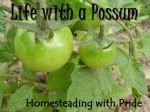main |
sidebar



Oregano can grow up to 2 ft. tall, with woody stems, and downy leaves. The flowers vary widely in color from white to pink to violet, and grow on long spikes at the top of the plant. Leaf color can range from bright, spring green to deep green. It has been introduced to the U.S. and grows wild in dry, southern lawns, roadsides and scrub, but is still rare.
Welcome to Herbs and Spice! Two things have always fascinated me: herbs and spices, and cooking. I'm always looking for new ways to use the herbs from my garden(and other people's), and forever trying and testing new recipes. So sharing my loves of all things garden and kitchen seemed to be the natural thing to do. I hope my blog will inspire you in your own garden or kitchen, so enjoy!
Follow Me!

Blog Archive
-
▼
2010
(40)
-
▼
June
(25)
- What to do about the Home Office?
- Homemade Peanut Butter
- Hangovers without drinking-WHUT?
- Herb of the Week: Oregano
- The Real World Called.....
- Jelly of the Day-Lavender Lemon
- Plum Jelly - Attempt 1
- Pitchers Galore!
- Herb of the Week: Lavender
- Fun With Flowers
- I'm In A Jam, So Let's Talk About Vegetable Contai...
- New Furniture & Wishful Thinking
- I AM really sorry!
- Herb of the Week: Basil
- A Gardener's Worst Nightmare & Visits with Old Fri...
- Underappreciated Husbands
- Eggplant is ALWAYS better with random pics....
- The Great McCaw Household Bedtime Bonanza!
- Verses For Sunday
- You Know It's Bad When You're Too Broke To Yard Sa...
- Jelly Success!
- Cookies on the Brain....Biscotti Brain!
- Experiments from the Garden & All New Recipe of th...
- The Great Measuring Cup Dilemma
- Welcome to Herbs & Spice & Everything Nice
-
▼
June
(25)

Get Your Widget!

Friday, June 25, 2010
So, all work has been finished for the time being, and I can devote myself to this late version of Herb of the Week. Sorry to all of you who had to wait! At the studio, we're switching from a traditional hosted website, which is outrageously expensive, even when you design it yourself, to a blog format. So I spent a good portion of my waking hours yesterday working on graphics for the new MAC Photography blog pages...not hard, but wickedly time consuming.
So now on to the fun stuff: oregano. We're all familiar with oregano from pizza and tomato sauces and other Italian food. But it is also a common ingredient in many international cuisines, such as Turkish, Portuguese, Spanish, Latin American and Philippino. It is also an herb that no Greek cook would go without, and is an essential element in most Greek cooking.
Oregano is a perennial herb of the mint family(are we noticing a pattern here?) that is native to the Mediterranean and western and southwestern regions of Eurasia. It is often confused with marjoram, which is also native to the same area, but has a more greyish-green look to it's leaves. There are several species of oregano: O. tyttanthum, which is native to Khirgizstan, O. vulgare hirtum, which is the common Italian or Greek Oregano, O.vulgare onites, or Turkish Oregano and O.vulgare syriacum, Syrian Oregano.
The flavor in various species and strains of oregano varies widely, from the rather bland common Oregano sold in most garden stores, to the pungent and intensely spicy Syrian oreganos, with a range of strong, pungent, bitter and sweet flavors in between. It is genreally agreed that Italian oregano is the best all-purpose oregano for culinary use.
Oregano can grow up to 2 ft. tall, with woody stems, and downy leaves. The flowers vary widely in color from white to pink to violet, and grow on long spikes at the top of the plant. Leaf color can range from bright, spring green to deep green. It has been introduced to the U.S. and grows wild in dry, southern lawns, roadsides and scrub, but is still rare.
Oregano is thought to have several medicinal uses. It is particularly high in antioxidants and has demonstrated strong antimicrobial effects. The leaves and flowering stems are strongly antiseptic. In addition, oregano has been used to treat colds, influenza, mild fevers, stomach aches and painful menstrual cramps. It is a strong sedative, and should never be taken in high doses.
Oregano is a classic in any herb garden and is highly ornamental in addition to it's culinary and medicinal uses. Like most herbs, it prefers well-drained soil and a sunny, somewhat dry location. Oregano is a welcome addition to any garden, herb or flower. Try it out in yours!
MandaMac
Subscribe to:
Post Comments (Atom)
About Me
Blogs I LOVE:
Recent Reading List
- A Salty Piece Of Land by Jimmy Buffett
- Shogun by James Clavell
- Jane Eyre by Jane Austen(again)
- Swiss Family Robinson by Johann Weiss(the REAL, unabridged version)
- The Ambassador's Women by Catherine Gaskin
- Pigs In Heaven by Barbara Kingsolver
- Still Life With Woodpecker by Tom Robbins(again)
Favorite Links
Template Design by SkinCorner |Grunged Girl Image from Dapino-Graphics












0 comments:
Post a Comment